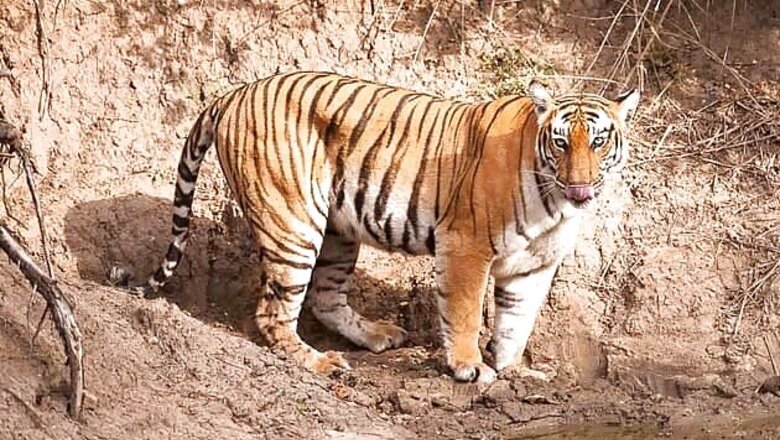
views
Bengaluru: As we head into the New Year, we have to brace ourselves for more man-animal conflicts in the periphery of all tiger reserves in Karnataka. We are bound to have more tiger trouble.
The recent man-eating incident near the Bhimgad Wildlife Sanctuary is just the beginning of what is to come. We could attribute this grim situation to an increase in tiger population in our reserves, fragmented corridors (which facilitate the movement of transient animals into adjoining habitats), prey depletion through poaching and lack of political will to address critical wildlife management issues.
It is worrisome that in a span of 18 months the Karnataka forest department has captured ten tigers from Nagarhole and Bandipur. At the last enumeration in our tiger reserves, there were 100 to 110 tigers in Bandipur, 60 to 65 in Nagarhole, 50 to 55 in BRT, 30 to 35 in Bhadra, 30-35 in Dandeli and Anshi.
There is a viable population in MM Hills. Also tigers have been frequently spotted in Cauvery Wildlife Sanctuary. There are a few in our reserve forests as well. It might interest you that a transient female had briefly forayed into the Bannerghatta national park, barely 22 km from Bengaluru, in 2012.
All put together there are over 400 tigers in Karnataka, making it the number one tiger state in the country. But with the increase in numbers we have had an increase in man-animal conflicts as well, reflected in frequent capture of tigers in Bandipur and Nagarhole. There have been stray man-eating incidents in BRT and Cauvery Wildlife Sanctuary in recent times.
The situation can get worse. A demoralized forest force, pre-historic ammunition, foisting of false cases against staff who confront poachers, lack of cooperation and support from local populace and the political establishment makes a heady cocktail of wildlife trouble.
In hindsight, decisions take by the forest department has also been baffling. Instead of winning the confidence of people who live in the vicinity of the forests, we are infuriating them to revolt against our dwindling wildlife population. The decision to relocate the tiger that was captured from Chikmagaluru was imprudent.
The very fact that the tiger had killed a woman in a coffee estate should have been a deterrent against its release. It should have wisely been kept in captivity at a zoo. But the urge to save it and allow it to propagate in its natural habitat seemed more appealing at the time of decision-making. It was taken in the interest of the tiger.
Now that the same tiger has killed and devoured a pregnant woman should caution the authorities from releasing captured animals into the wild again. As history reflects, either they are killed by resident tigers or they prey on vulnerable men and women.
So what is the solution then? Considering that more injured, hungry and weary tigers are expected to be captured in the future and that there is no space for them in zoos, the Karnataka forest department has to identify an area where these wild-caught tigers can be rehabilitated.


















Comments
0 comment